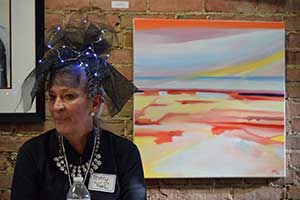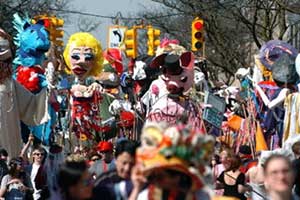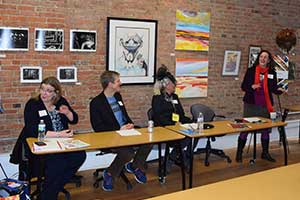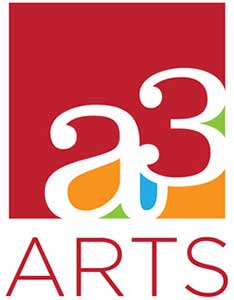

“We operate on a different platform. We’re community built,” said Brown. “It’s our goal to help people understand that they, too, can be creative and come together as a community to be a collective creative experience.”
Brown was part of the League’s “Foolish Happy Hour & Panel Discussion” on April 10 (see press release), where panelists shared their views on the importance of arts and culture to a community’s economic vitality. She was joined by fellow panelists Kirk Westphal, Ann Arbor city councilmember, Deb Polich, CEO of Artrain, and moderator Mary Morgan, founder and executive director of The CivCity Initiative.

“It’s important to understand that these high quality events can draw visitors and money and build the brand of the community,” she said. When traveling to other cities and states, she has often heard people say that they’ve been to the arts fairs, or want to go experience them.
City Commissioner Kirk Westphal is one of those people. Eleven years ago, he and his wife were living in New York City and searching for a new place to call home. They had heard about Ann Arbor’s reputation as a dynamic city with a thriving arts and culture community, so it soon went from their short list to the top of the list. He cited a Knight Foundation study that emphasizes the role of arts and culture in helping form an attachment to the community so that people want to stay, or just as importantly, want to move there.
“There is no just serving the people who are here now,” said Westphal, an urban planner and videographer. “Every day there are people here for a job interview or applying to go to school. Brand matters, what’s going on matters. All those collective decisions affect the future of the community.”


Funding the Arts
Since arts and culture so often don’t receive any public funding, arts organizations have to tap into their creativity to find other monetary means to keep their enterprises afloat. “We spend an enormous amount of time finding money to put on a free event,” said Brown, who often relies on the generosity of small businesses and residents for money, work space, and materials. “Nonprofits have to think of ways to building in valuable fundraising.”
Westphal acknowledged the defeat of an arts tax in Ann Arbor in 2012, but suggested that it gives the city an opportunity to think about arts funding differently. He also advised people to quiz city council candidates about their position on the arts. “We can always spend money on other things, but part of it has to be carved out for arts and the future of our community,” he said.
Other states have developed public funding mechanisms to support arts programming. In the Cleveland area, for example, there’s a tax levied on tobacco that is dedicated to the arts. In Austin, Texas, they use a 9 percent accommodation tax to support arts and culture. In November 2008, Minnesotans passed the clean water, land, and legacy amendment to the Minnesota Constitution which includes 3/8 of one percent of the state’s sales tax dedicated to the arts and cultural heritage fund. This amounts to $70 million annually – ½ the budget of the National Endowment for the Arts. Michigan cities have very few taxing options and the panelists called on state lawmakers to change some of these regulations to help further the support for the arts.
Arts Wish List
All the panelists have a vision for what they would like to see in the Ann Arbor arts community five or ten years from now. Westphal would like to see a variety of place-based crowdfunding projects around the community that everyone can participate in and curate themselves. Brown would like to see a bricks-and-mortar creativity center that many creative organizations could share throughout the year. And Polich hopes that Washtenaw County leadership and residents begin embracing the many reasons that arts and culture are important – everything from sparking creativity and innovation to driving tourism and strengthening the local economy. Then maybe the question of “Why are the arts important?” will go away.
Click the following links for more information: